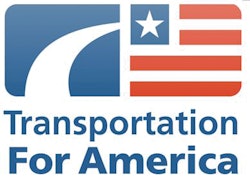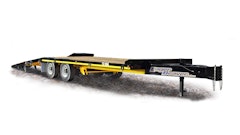
Nearly 67,000 of the nation’s 605,000 bridges are rated “structurally deficient” and are in need of substantial repair or replacement, according to bridge inspections analyzed in The Fix We’re In For: The State of the Nation’s Bridges 2013. Nearly 8,000 are both structurally deficient and “fracture critical”, meaning they are designed with no redundancy in their key structural components, so that if one fails the bridge could collapse. The Federal Highway Administration estimates that the backlog of troubled bridges would cost $76 billion to eliminate.
Interactive map: how does your state's bridges compare to other states
The report ranks states and the District of Columbia in terms of the overall condition of the their bridges, with one having the largest share of deficient bridges, 51 the lowest. Twenty-one states have a higher percentage of deficient bridges than the national average of 11 percent. The five states with the worst bridge conditions have a share over 20 percent:
- Pennsylvania (24.5%)
- Oklahoma (22.0%)
- Iowa (21.7%)
- Rhode Island (21.6%)
- South Dakota (20.3%)
At the other end of the spectrum, five states have less than 5 percent of their bridges rated structurally deficient:
- Nevada and Florida (2.2%)
- Texas (2.6%)
- Arizona (3.2%)
- Utah (4.3%)
2013: U.S. states, ranked by percentage of deficient bridges
“With the collapse of the I-5 bridge in Washington state last month, coming just six years after an interstate collapse in Minnesota, Americans are acutely aware of the critical need to invest in our bridges as our system shows its age,” said James Corless, director of Transportation for America. “Today, though, there are more deficient bridges in our 100 largest metropolitan areas than there are McDonald’s locations nationwide.” Put another way, laid end to end, all the deficient bridges would span from Washington, D.C. to Denver or from Tijuana, Mexico to Seattle - more than 1,500 miles.
By the numbers: Bridge Structural Deficiency is a Growing Concern (infographic)
The need is growing rapidly, the report notes: While most bridges are designed to last 50 years before major overhaul or replacement, American bridges average 43 years old. Age is a major factor in bridge conditions. Roughly half of the structurally deficient bridges are 65 or older. Today there are nearly 107,000 bridges 65 or older, and in just 10 years, one in four will be over 65.
Congress has repeatedly declared the condition and safety of our bridges to be of national significance. However, the money to fix them is getting harder to come by with declining gas tax revenues and a fiscal squeeze at all levels of government. At the same time, Congress made the prospects for bridges even more uncertain last year by eliminating a dedicated fund for them in its update of the federal transportation program. The new law also reduces access to funds for 90 percent of structurally deficient bridges, most of which are owned by cash-strapped local governments.


























